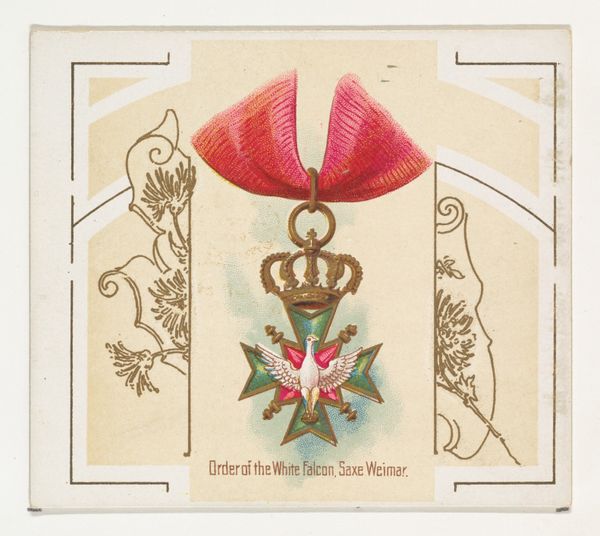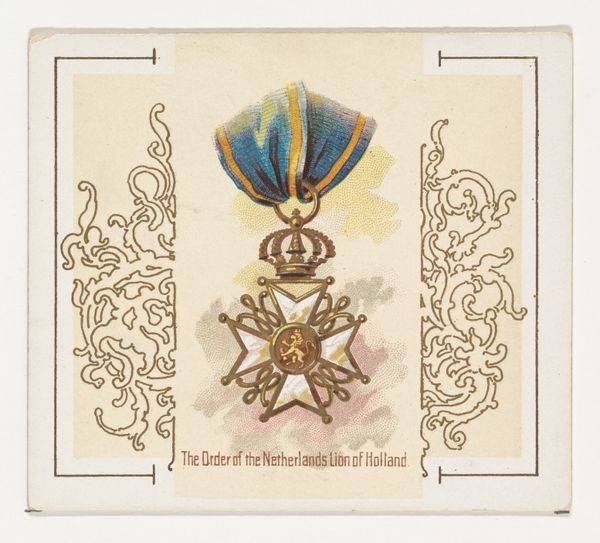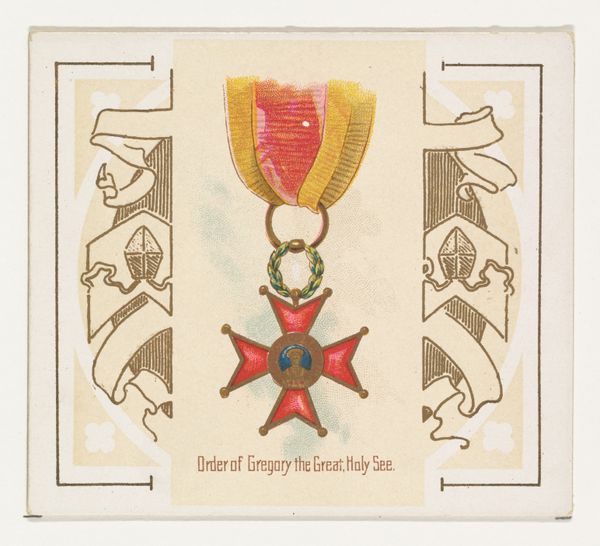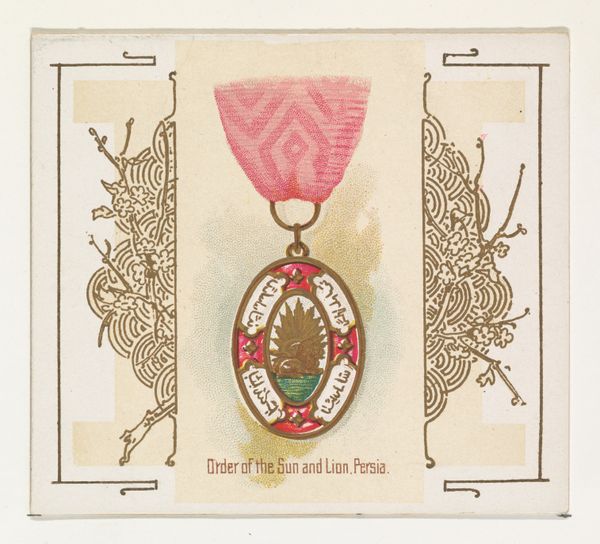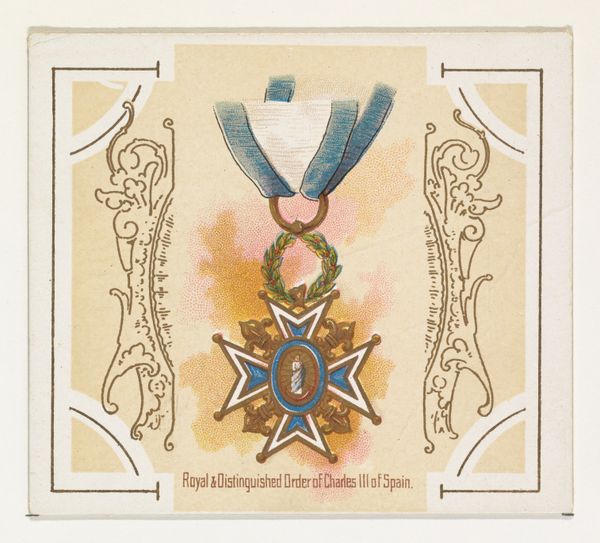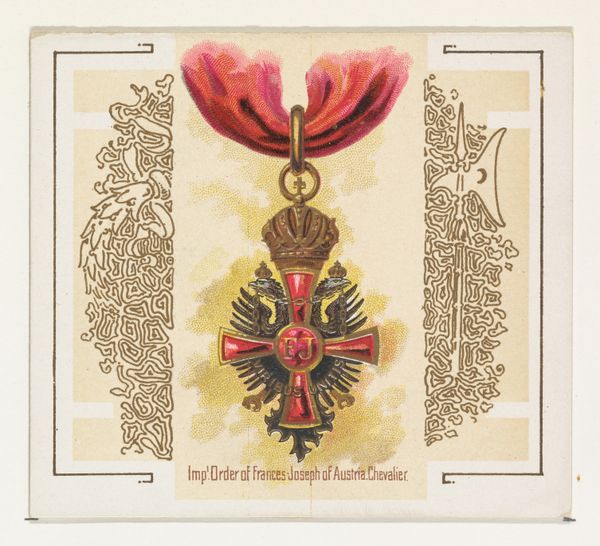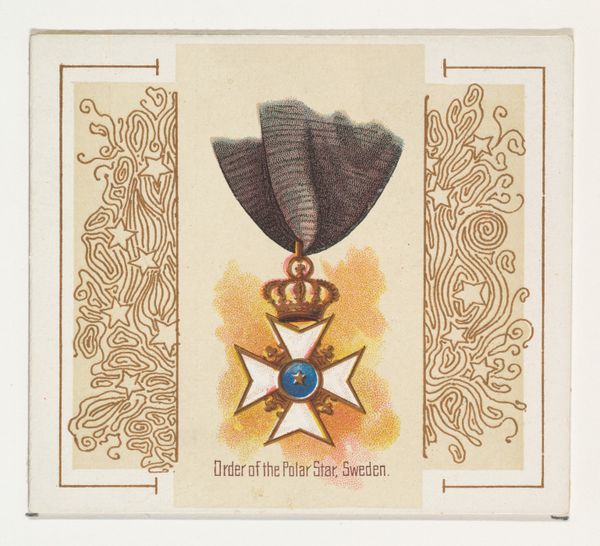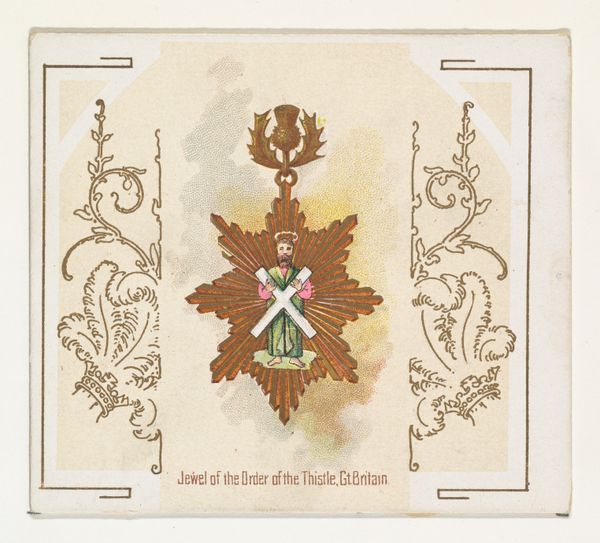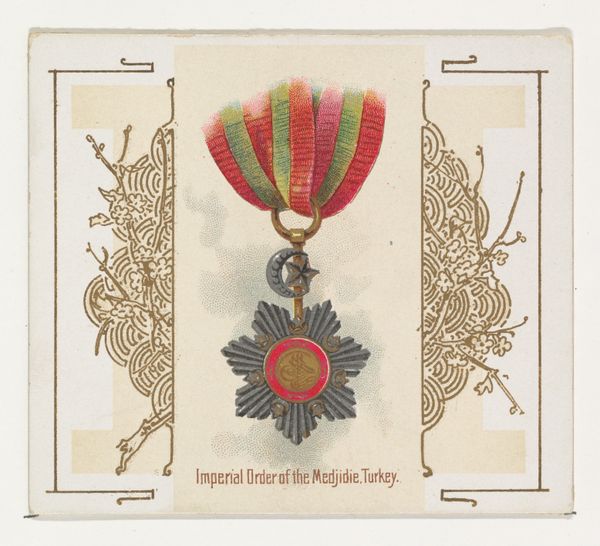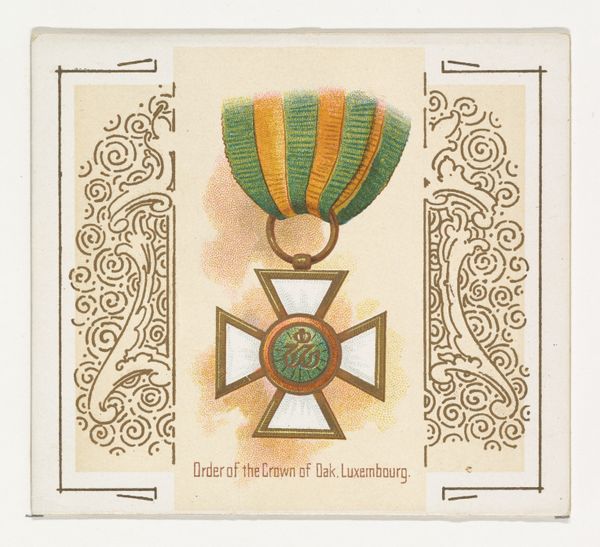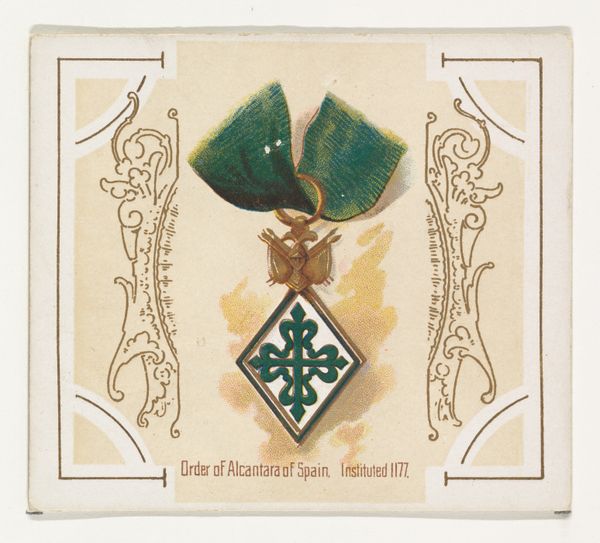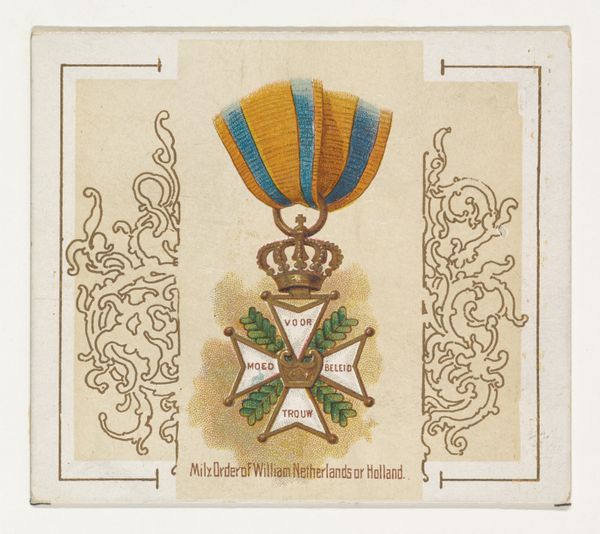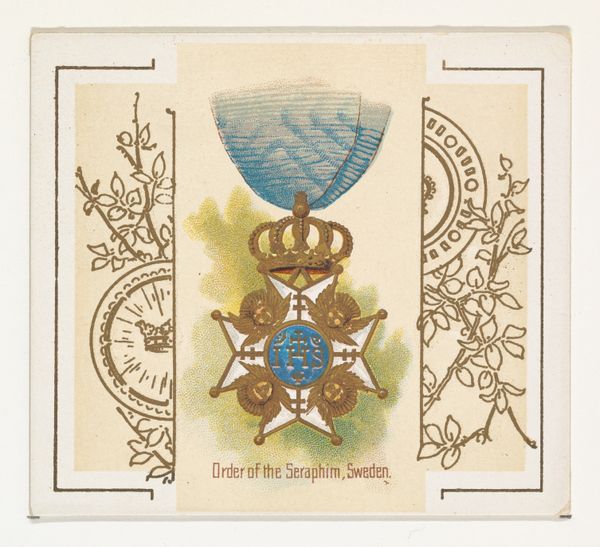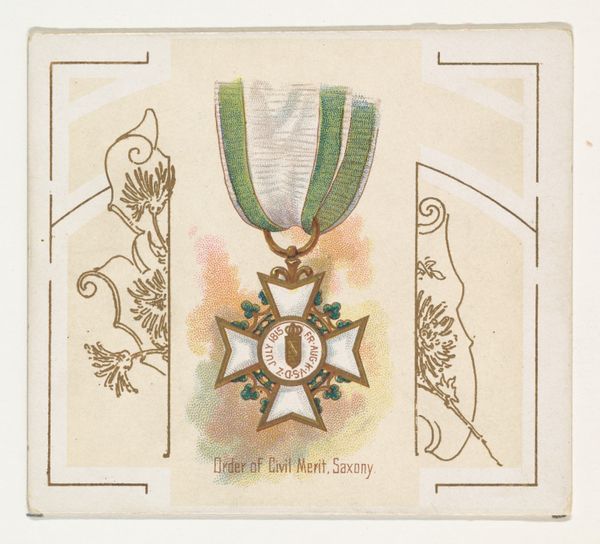
The Cross of the Legion of Honor, France, from the World's Decorations series (N44) for Allen & Ginter Cigarettes 1890
0:00
0:00
drawing, print, watercolor
#
medal
#
drawing
# print
#
watercolor
#
decorative-art
#
watercolor
Dimensions: Sheet: 2 7/8 x 3 1/4 in. (7.3 x 8.3 cm)
Copyright: Public Domain
Curator: This chromolithograph, titled "The Cross of the Legion of Honor, France," dates to around 1890. It comes from a series of collectible cards produced by Allen & Ginter, the cigarette manufacturers. What are your first impressions? Editor: It's immediately striking how delicate it seems for something connected with military honors. The pale washes of watercolor lend an air of refinement, and the miniature format—I imagine it fits neatly into the palm of a hand—makes it almost jewel-like. Curator: Precisely! We must consider the cultural context here. Allen & Ginter used such cards as a marketing tactic, incentivizing cigarette purchases. The cards, cheap and easy to make en masse, had value only in that particular context of the expanding industry. They become valued for being "complete sets", driving consumer behaviour. Editor: I see your point about industrial manufacturing, but look at the symbol itself, though. The Legion of Honor, signified by this cross, has always represented French identity, its virtues, and national pride since Napoleon established the order in 1802. The very act of choosing this symbol elevated their product beyond mere tobacco. The delicate pink of the ribbon suggests tenderness and sensitivity in its depiction, which speaks volumes about how the manufacturers viewed the Legion. Curator: Possibly. But the medium itself suggests an engagement with the social structure. The ready availability of cheap watercolors democratized the decorative-art, moving artistic rendering away from elites. Its a commodification of the prestigious French award. Editor: It does show how imagery circulates and accrues new meanings. Look at the surrounding artwork, even. The neutral framing really accentuates and draws you to the center image of the symbol of French identity and triumph. The image on the cards were meant to conjure an array of emotional response from their audiences. Curator: I am not convinced. Even with a cultural symbol in tow, ultimately, it is a marketing product geared to consumerism. These things have an immense cultural impact; these companies facilitated a specific sort of leisure activity to build their audiences. Editor: Fair enough. It's fascinating how this small object contains so many layers—national identity, commercial enterprise, and the democratization of imagery. Curator: A fitting image for this cultural melting pot. The making is a mirror.
Comments
No comments
Be the first to comment and join the conversation on the ultimate creative platform.
